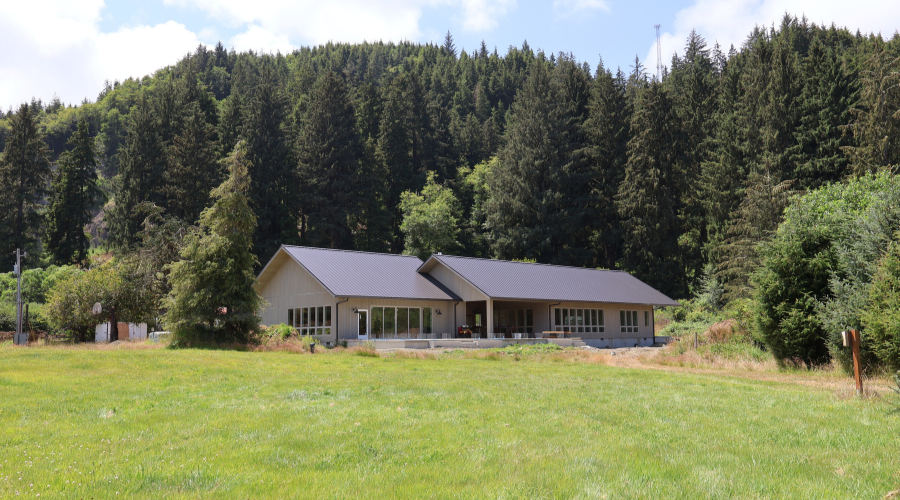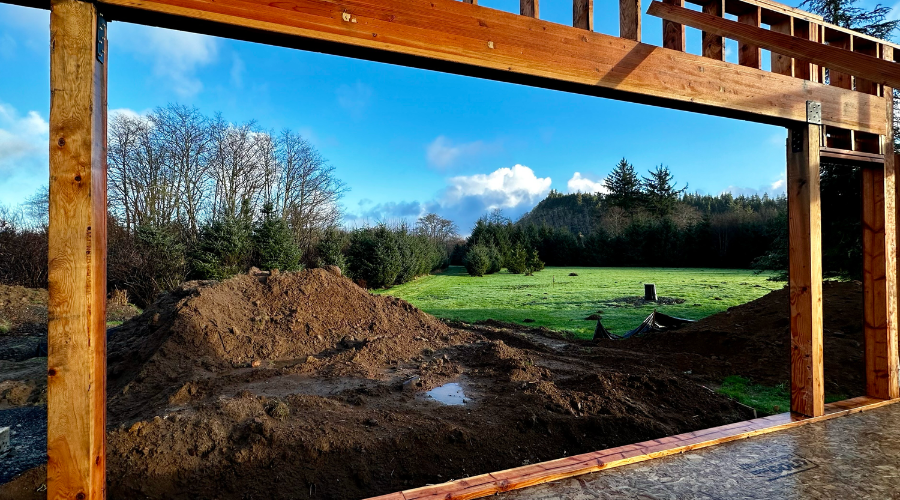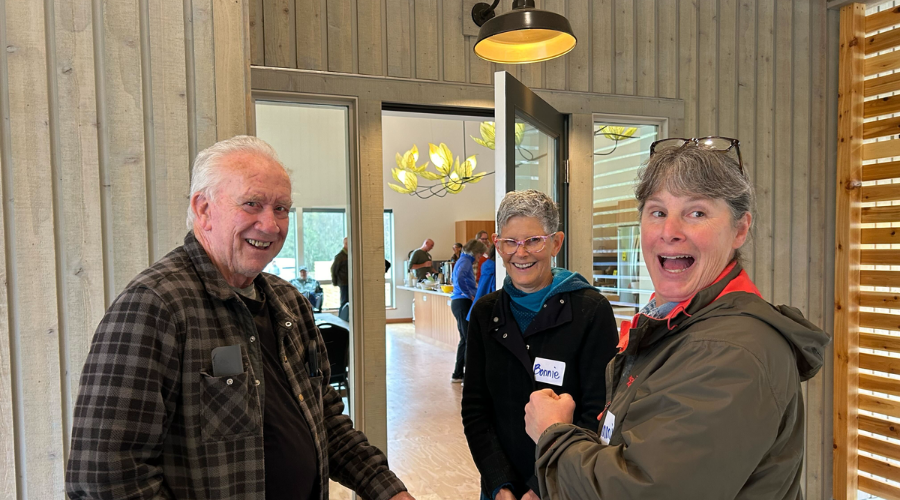


In Fall 2024, NCLC finished its new Circle Creek Conservation Center at the organization’s Circle Creek Habitat Reserve, just south of Seaside off Rippet Road. The project is more of a homecoming for the organization, which originally was headquartered at the reserve before a fire destroyed the office building in 2012. Ever since then, it has been a goal for NCLC to rebuild at Circle Creek.
NCLC broke ground on the new conservation center late last summer, after removing the old barn at the property that was previously used for events and community gatherings. NCLC worked with Cove Built Construction on the project; Vito Cerelli, of O’Brien Design+Build, served as the architect. The goal was to create a single-story structure that would honor the old barn that used to sit on the reserve, as well as the landscape itself. They utilized natural materials and best practices for conservation and sustainability throughout the construction process, and the building also incorporates a solar panel system.
The center blends NCLC’s goals for community outreach and conservation. It includes offices for NCLC staff and volunteers and shared work areas, in addition to multifunctional meeting rooms and community event and gathering space, including a covered patio, and trailhead access. The community space has been available for not only NCLC’s own programming, but use by other community organizations as well. NCLC officially welcomed the public back to the Circle Creek campus during an open house on Nov. 3, 2024. Read More
The establishment of the new center in 2024 also coincided with the 20th anniversary of the conversation of Circle Creek Habitat Reserve. At the time of acquisition in 2004, Circle Creek had spent decades as converted land, used for agriculture and grazing. Portions of it were mowed for pasture. It had three big buildings established. But it also had significant potential, which included valuable ecological characteristics such as a portion of forestland; a major confluence zone in the Necanicum Watershed; priority habitat for local flora and fauna; and the presence of a floodplain. The intact and high-functioning spruce- and cedar-swamp wetlands were also a main focal point. That habitat type used to be quite prevalent but now is very rare, with only 3 percent of lower watershed forests and wetlands remaining.
“We were able to cultivate our volunteer community, because we had this home and this place where the story just told itself. They could come out here and know what it was about,” Executive Director Katie Voelke says. “All of those things make Circle Creek an important anchor.” Read More